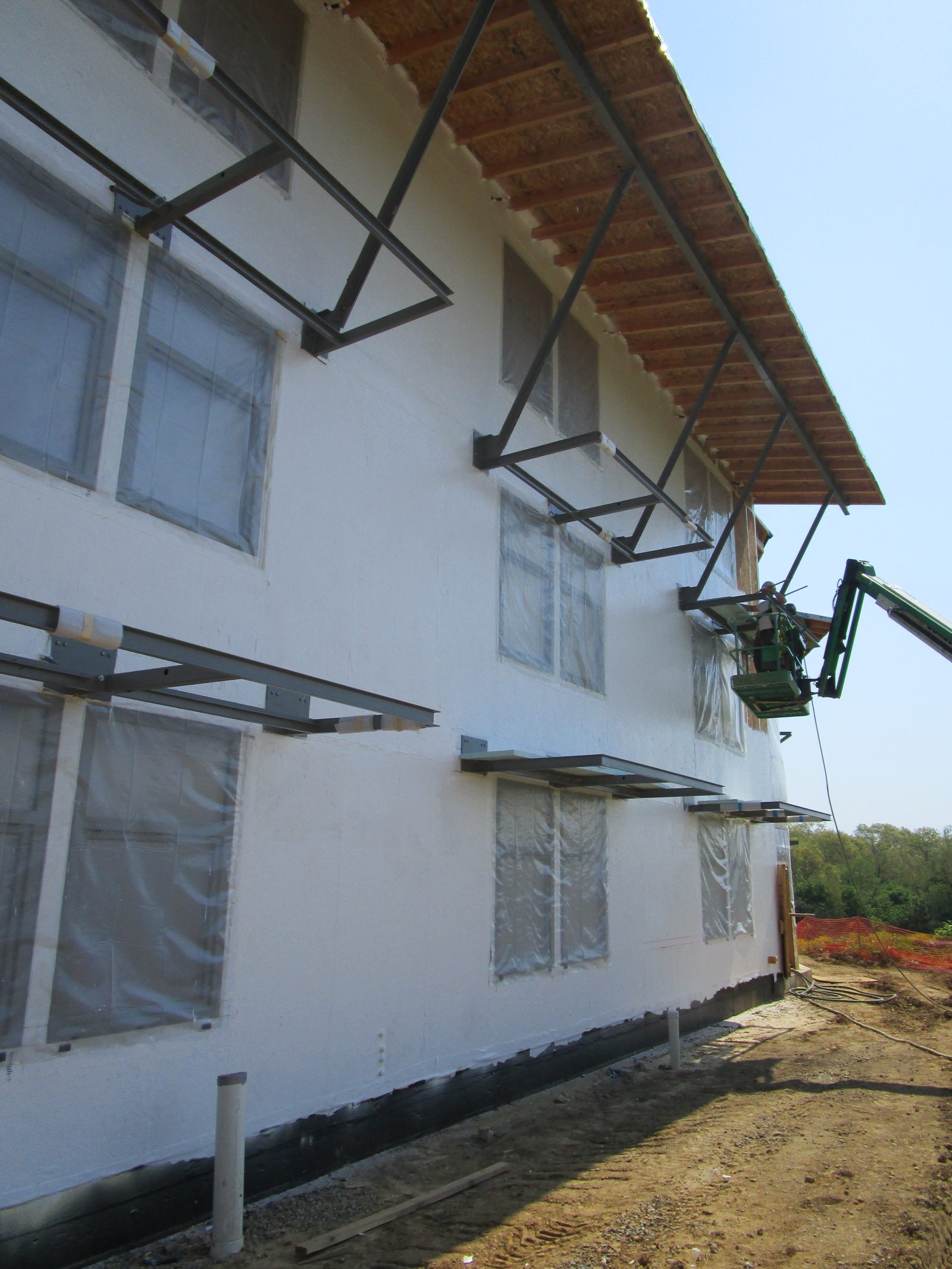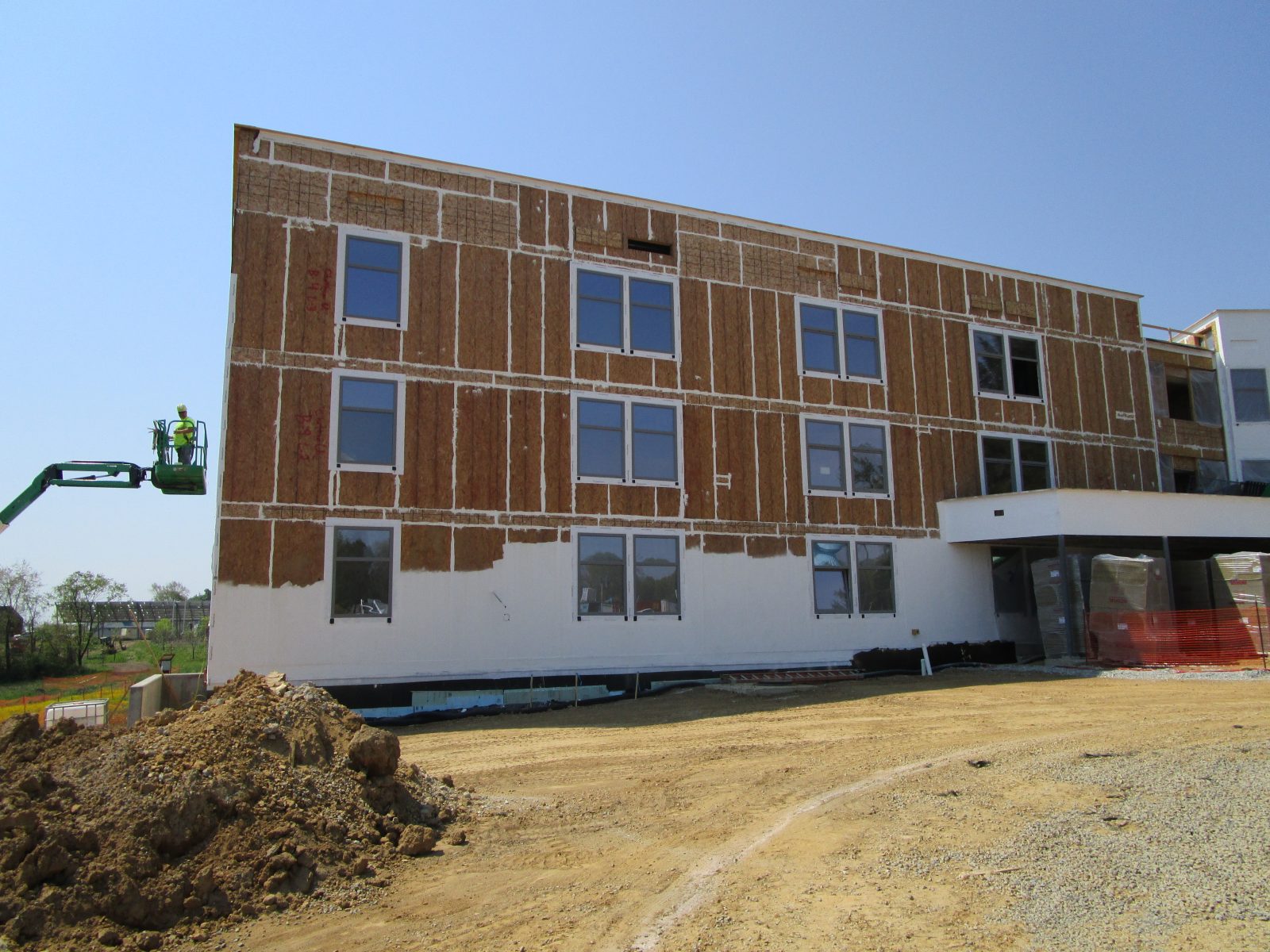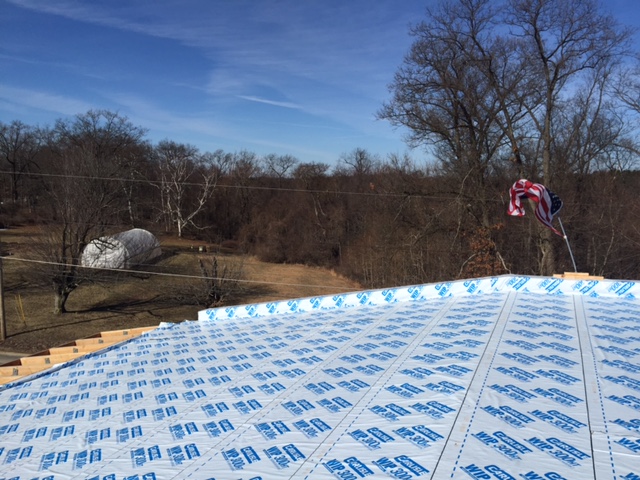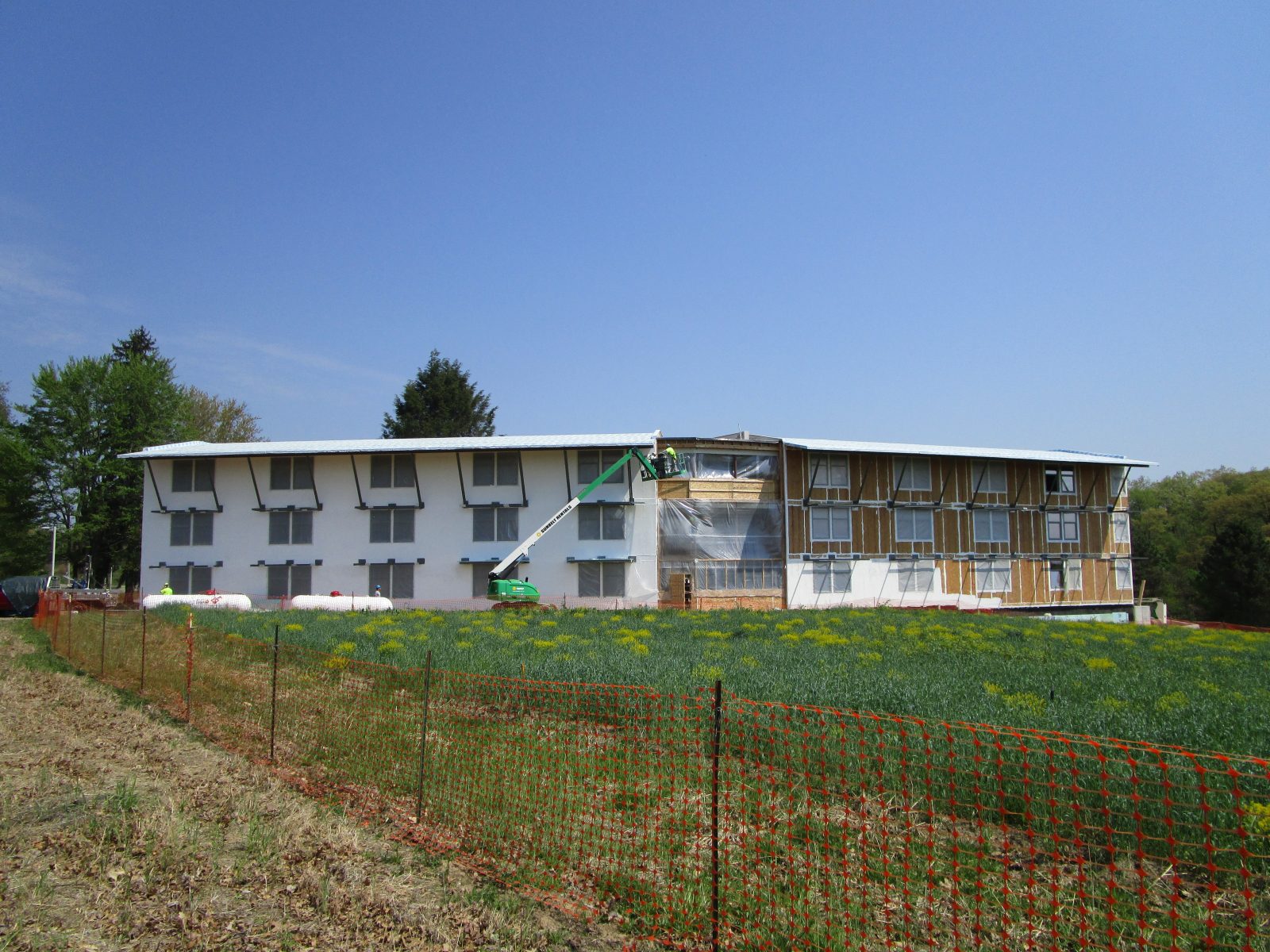Pittsburgh, PA
Chatham University, Eden Hall Campus
Scope/Solutions
After receiving a 388-acre donation, Chatham University set out to create the world’s first net-positive campus and a new home for the Falk School of Sustainability. The campus goals include water reuse, net positive energy production, and zero waste. SGH consulted on the building enclosure design for the first phase, which includes a new residence hall, field lab and hoop house, cafe, dining hall, classrooms, outdoor gathering spaces, and supporting infrastructure to serve the first 250 residential students.
SGH consulted on the design of below-grade waterproofing, curtain wall and window systems, exterior walls, and low- and steep-slope roofing. Highlights of our work include:
- Reviewing the building enclosure design for airtightness, watertightness, thermal performance, condensation resistance, and constructability, and recommending ways to improve performance
- Helping select systems, such as wall cladding and underlayments
- Evaluating waterproofing system alternates, including weather barriers and roofing systems
- Developing details to integrate the various assemblies with each other and with other building enclosure systems
- Providing construction phase services, including reviewing building enclosure submittals and helping the project team address field conditions
Project Summary
Solutions
New Construction
Services
Building Enclosures
Markets
Education
Client(s)
Mithun
Specialized Capabilities
Roofing & Waterproofing
Key team members

Craig Allender
Building Technology Division Head, San Francisco Bay Area
Additional Projects
Mid-Atlantic
Walker-Jones Educational and Community Center
Developed to promote revitalization of the surrounding Washington, DC neighborhood, the Walker Jones Educational and Community Center project includes a K-8 school with an integrated public library and community recreation center. Hord Coplan Macht retained SGH for the structural design.
Mid-Atlantic
Towson University, Glen Towers
Originally constructed in 1983, the university elected to update and improve the complex. SGH consulted on the design of the building enclosure and provided building enclosure commissioning services from the early stages of design through construction.



